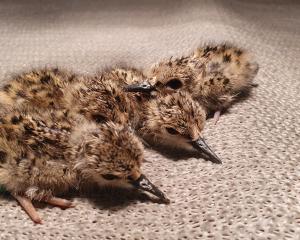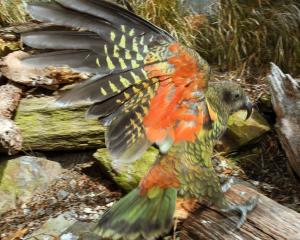Getting the quality information needed to help New Zealand's nationally critical listed sea lions could be in danger as research trips are cut back, scientists say.
Through levying the fishing industry, the Department of Conservation has funded research trips to the Auckland Islands annually to monitor sea lion pup numbers.
Last year's trip was contracted out and its length was cut from the usual three months to one. Also trimmed was the number of researchers, from six to four.
In tandem with the ground crew, an aerial survey of pup numbers was conducted.
Blue Planet Marine senior scientist Dr Simon Childerhouse, who took part in the trip, said the shorter and smaller field trip impacted on both the quality and quantity of the data collected from the programme.
''The shorter field season would lead to less data being collected and only over a part of the breeding season, so we won't know what is happening during the rest of the season.
''This will give us less ability to understand the population and any changes that are occurring and, perhaps more importantly, to detect when and if those changes are taking place.''
This meant it would reduce scientists' ability to react appropriately and take prompt action if required. The reduced amount of data might also reduce scientists' ability to understand any changes ''be they positive or negative''.
It also meant the team had less time to sight older sea lions and during the last trip 67% fewer sightings were made.
University of Otago zoologist Dr Bruce Robertson said it appeared Doc was pulling back on funding the trips.
It could no longer levy the fishing industry the same way for the work, as it had made the conclusion fishing was not impacting on the species.
''It's short-sighted.''
Re-sighting sea lions was important to monitoring their survival over time.
''The shorter their time there, the less time to re-sight them and the less quality of information.''
The aerial survey work Doc was trialling was an example.
A report on the survey said aerial photography was able to provide robust, cost-effective estimates of pup numbers with good precision but there was a greater ability by ground crews to detect dead pups.
Doc science adviser Dr Igor Debski, of Wellington, said the trip was shorter this year because Doc had completed its tracking research which had required more time and people.
''For the first time this year it was purely [about] population estimates and demographics.''
Researchers were experimenting with ways to achieve the results needed at lower costs and the trip had provided comparable data, but the lack of re-sights meant Doc was reassessing the length of the trip for next season, he said.
Another research project on demographic modelling would also help Doc target its research needs but it was ''trial and error''.




